
By Jenny Tabada
Guest writer for Wake Up World
Can food scraps be grown again? Turns out, the vegetables and fruits you’ve picked from the grocery stores or harvested from your own backyard can be given another take on life, and another. All you need is the right ideas on how to regrow these assumed ‘food wastes’ on your own, from cuttings you’d normally throw out as kitchen scraps.
And the best part is: re-growing fruits or vegetables from kitchen scraps is plain easy. You can even do it indoors or in your potting and garden sheds. And a few composting tricks will also help you make growing easier.
[pro_ad_display_adzone id=”110028″]
Why re-grow when you can just harvest or buy another? Well, it’s all in the name of saving. You get to cut on your grocery expense, allot your garden beds for other plants to grow, and reduce the wastes that pile up in your trash bins. So the next time you think about throwing those vegetables and fruits scraps away, think again. Those leftover parts may do just as well in filling your baskets with healthy groceries.
If you’re ready to take an environment-friendly, space-saving, frugal gardening trick, we’ll show you a roundup of fruits and vegetables re-growing ideas.
Just remember: As in any gardening, provide the soil with the right nutrients or organic fertiliser (such as compost) for the best produce.
Regrowing Vegetable Leaves:
| Lettuce |
|
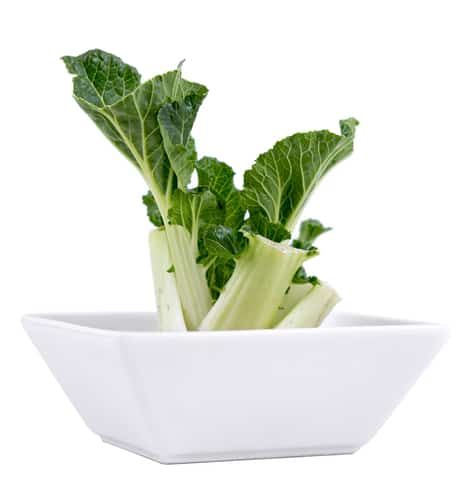 |
Plant part to regrow: Base of stalk
What to do:
1. Place the base or bottom part of the stalk in a bowl with water.
2. Keep it under sunlit area.
3. Sprinkle with water twice a day for 4-5 days.
4. When roots and new leaves begin to appear, transplant in your garden bed. |
| Celery |
|
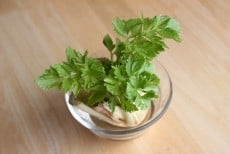 |
Plant part to regrow: Base of stalk
What to do:
1. Place the bottom part of the stalk in a bowl of warm water.
2. Set the bowl in direct sunlight.
3. Watch for new leaves to grow from the base for about a week.
4. Transplant in your garden soil, covering it completely in soil except the tip of the leaves.
5. Let it fully grow. |
| Lemongrass |
|
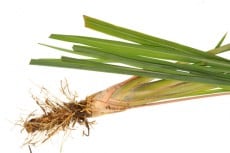 |
Plant part to regrow: Base with roots
What to do:
1. Store the roots in a jar of water.
2. Set the jar in direct sunlight, keeping the water fresh everyday.
3. Watch for new roots and leaves to grow after a week.
4. Transplant in your garden soil and let it fully grow. |
| Fennel |
|
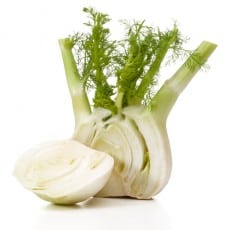 |
Plant part to regrow: Base with roots
What to do:
1. Save an inch of the base with the roots intact.
2. Place in a container with water and leave it under direct sunlight.
3. Roots will grow more and new green shoots appear on top of the base.
4. Transplant into garden soil. |
| Basil |
|
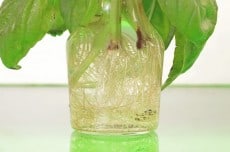 |
Plant part to regrow: Stem
What to do:
1. Cut a stem about 3-4 inches long.
2. Soak the stem in a glass of water under a cool area.
3. Keep the water fresh and enough to cover the stem.
4. Roots will begin to form after a week.
5. Transplant after the roots grow to about a couple of inch. |
| Cilantro |
|
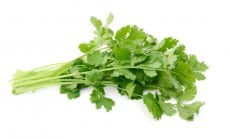 |
Plant part to regrow: Stem
What to do:
1. Cut a few inches of stem.
2. Soak the stem in a glass of water under a cool area.
3. Transplant after roots grow out of the stem to about a couple of inch. |
| Bean Sprouts |
|
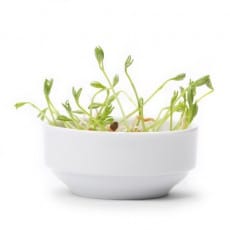 |
Plant part to regrow: Beans with its roots
What to do:
1. Soak a few beans in a jar with half cup of water and leave it overnight.
2. Drain the water from off the jar, the following day, and replace with new water.
3. Cover the container with a towel until the next day.
4. Drain and replace water in the jar until sprouts begin to appear. |
Regrowing Root Crops:
| Potato |
|
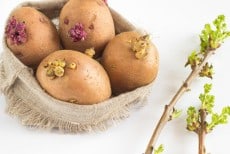 |
Plant part to regrow: Skin/Peelings
What to do:
1. Cut at least two inches of the peel having a seed potato, commonly known as the “eyes,” on it.
2. Allow the peelings to dry overnight.
3. Plant them four inches deep in the soil, making sure that the eyes are faced up to let them sprout outwards the soil.
4. Wait for a few weeks for the potato to grow. |
| Sweet Potato |
|
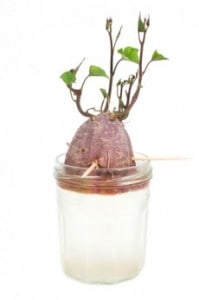 |
Plant part to regrow: Root Crop
What to do:
1. Cut the root crop in half.
2. Suspend the crop over a jar of water using toothpicks and allow the bottom half of the crop to reach the water.
3. Place the jar in a warm area
4. Watch for roots and sprouts to appear after a few days until the sprouts reach about 4 inches long and the roots to about an inch.
5. Carefully take the sprouts off the sweet potato and place in a bowl with the bottom part of the sprouts submerged in the water.
6. Roots will appear from the bottom of the sprouts within a few days.
7. Transplant in your garden soil and water daily. |
| Ginger |
|
 |
Plant part to regrow: Ginger Root/Rhizome
What to do:
1. Spare a small part of the ginger root with a bud on it.
2. Soak the ginger on water overnight.
3. Plant in potting soil, making sure that the buds are faced down.
4. Place the pot in a sunny area and keep it well-watered.
5. New shoots and roots will appear after a couple of weeks.
6. Ginger will be ready for harvest after a year or less. |
| Garlic |
|
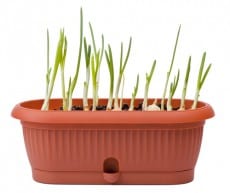 |
Plant part to regrow: Clove
What to do:
1. Spare a piece of clove including its base for planting.
2. Plant in the clove with the sprouts facing up the potting soil.
3. Keep the pot under direct sunlight and keep the soil moist everyday.
4. New stalks will appear for about a few weeks.
5. Harvest the garlic when the stalks have dried or yellowed. |
| Onion |
|
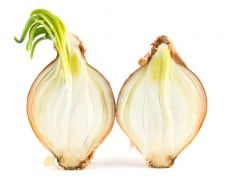 |
Plant part to regrow: Roots
What to do:
1. Cut a half inch of the onion bottom together with the roots.
2. Allow the cut part to dry for a few hours.
2. Cover the onion bottom with potting soil and keep it under a sunny area.
3. Keep the soil moist until the bulbs grow; the plant will start growing after a few days.
4. When new leaves developed, remove from the pot to divide the plant in two, both having some roots attached.
5. Replant in separate pots or in a bed. |
| Green Onion |
|
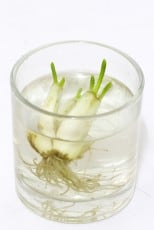 |
Plant part to regrow: Roots
What to do:
1. Chop off the green onion/scallions with its roots
2. Place in a jar of water and keep the water fresh everyday.
3. New growth appears on top within two days, and they’ll be ready to be chopped for use after a week. |
| Turnips |
|
 |
Plant part to regrow: Tops
What to do:
1. Save the tops of the turnip and place in a jar of water.
2. New green tops and roots will appear only after a few days.
3. Allow the roots to grow about a few inches until ready for transplanting. |
| Beets |
|
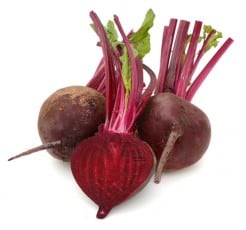 |
Plant part to regrow: Tops
What to do:
1. Cut some top parts of the beet and leave in a jar of water.
2. New green tops and roots will appear after a few days.
3. Allow the roots to grow about a few inches until ready for transplanting. |
| Parsnips |
|
 |
Plant part to regrow: Tops
What to do:
1. Save the tops of the parsnips and place in a jar of water.
2. New green tops will appear only after a few days.
3. Allow the roots to grow about a few inches until ready for transplanting. |
Regrowing Fruits:
| Avocado |
|
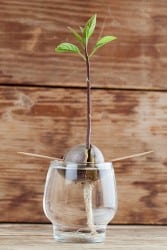 |
Plant part to regrow: Seeds
What to do:
1. Wash the seed with clean water.
2. Suspend the seed over a jar of water using toothpicks.
3. Allow the bottom half of the seed to reach the water.
4. Set the jar in a warm dry place, but not under direct sunlight.
5. Check the water daily and add in as needed.
6. Watch for roots and stems to appear after six weeks.
7. Cut and keep the stems to 3 inches until leaves begin to appear.
8. Transplant it by covering the bottom half of the seed with garden soil. |
| Tomato |
|
 |
Plant part to regrow: Seeds
What to do:
1. Rinse the seeds with clean water and let dry.
2. Plant in fertile potting soil and leave under sunlit area.
3. Water the soil a few times every week.
4. When seedlings start to sprout to a few inch, transplant in your garden bed. |
| Pumpkin |
|
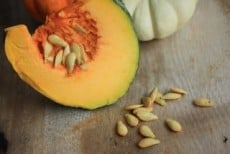 |
Plant part to regrow: Seeds
What to do:
1. Save a few fresh seeds for planting
2. Spread them out in a sunny area and cover with garden soil.
3. Keep the soil moist or water only when needed.
4. The seeds will start to sprout after a few days. |
| Bell Pepper |
|
 |
Plant part to regrow: Seeds
What to do:
1. Gather a few seeds and plant them in a potting soil.
2. Keep them well-watered under direct sunlight.
3. Peppers grow fast and when seedlings are about 8 inches tall, they’ll be ready for transplanting. |
| Apples |
|
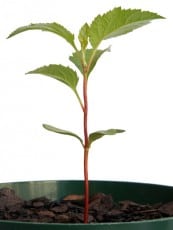 |
Plant part to regrow: Seeds
What to do:
1. Take out the seeds from off a few apples; the more apples, the better the chance of seeds to germinate.
2. Wrap the seeds in a wet paper towel and seal in a plastic bag.
3. Keep the bag in a cool place.
4. It will take about a month for seeds to germinate but check every week to maintain its moist.
5. The seeds are ready for planting when sprouts begin to appear.
6. Dig into 1-2 inches potting or ground soil and water daily. |
| Peaches |
|
 |
Plant part to regrow: Seeds
What to do:
1. Take out a good amount of seeds from the fruit.
2. Let the seeds dry out very well.
3. Plant in a fertile soil, under a sunny area. |
| Lemons |
|
 |
Plant part to regrow: Seeds
What to do:
1. Save a few seeds for planting.
2. Clean and let dry the seeds before planting.
3. Plant in a rich soil.
4. Expect new fruits after a couple of years. |
| Pineapple |
|
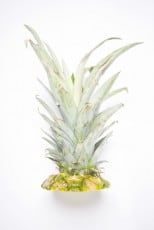 |
Plant part to regrow: Crown
What to do:
1. Carefully grab hold of the entire crown and twist hard; or cut the crown from off the fruit.
2. Remove any excess meat and let the small brown bumps below the crown appear.
3. Let the crown dry for a few days.
4. Place the crown in a jar of water, making sure that the water is fresh everyday.
5. Roots will start to emerge after three weeks; plant them in a potting soil.
6. Keep the soil moist.
7. The plant should be well-rooted to the soil after about a couple of months.
8. You may need to repot the pineapple after a year as the fruit continues to grow. |
| Hazelnut |
|
 |
Plant part to regrow: Nuts/Seeds
What to do:
1. Let the nuts dry well.
2. Plant in a fertile potting or ground soil.
3. Expect new fruits after a couple of years. |
| Chestnut |
|
 |
Plant part to regrow: Nuts/Seeds
What to do:
1. Gather a good amount of nuts; you may need more than one tree for cross pollination and better growth.
2. Let the nuts dry well.
3. Plant in a fertile potting or ground soil.
4. Expect new fruits after a couple of years. |
Related reading:
About the author:
Passionate about the outdoors, Jenny Tabada is a contributing writer for Garden Buildings Direct, based in Nottinghamshire on the cusp of Sherwood Forest. Garden Buildings Direct know that the easiest way for people to enjoy the outdoors is in their garden, and they’re committed to making the garden a more comfortable and enjoyable place! Their blog covers everything to do with the garden and gardening, and is a great place to find interesting articles, general information, hints, tips and inspiration.
Visit www.gardenbuildingsdirect.co.uk/blog for more.
[pro_ad_display_adzone id=”110027″]

































